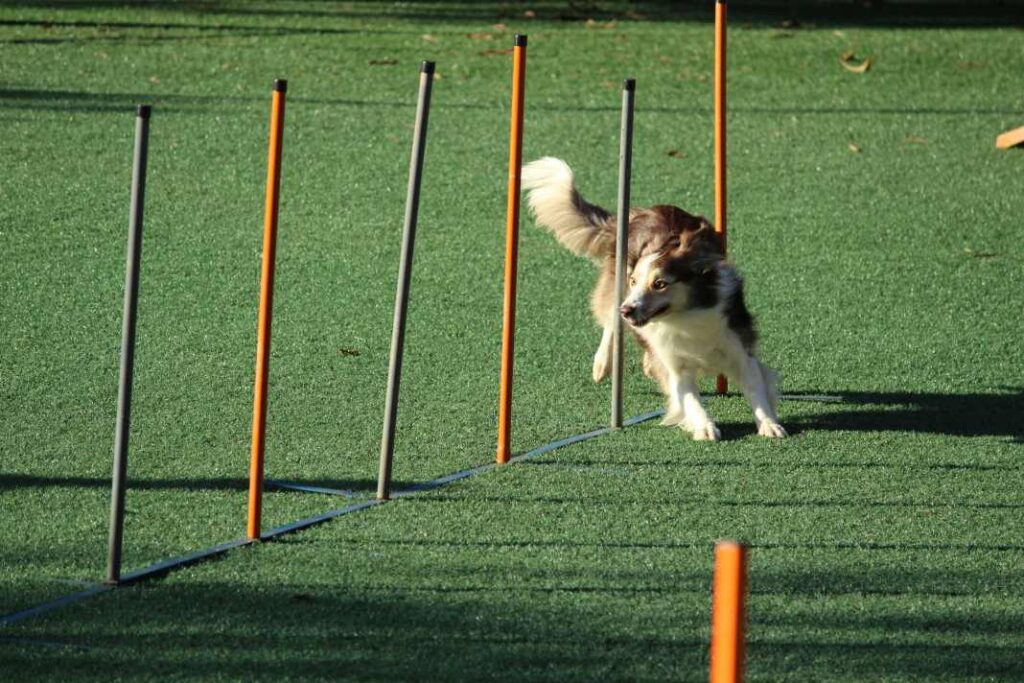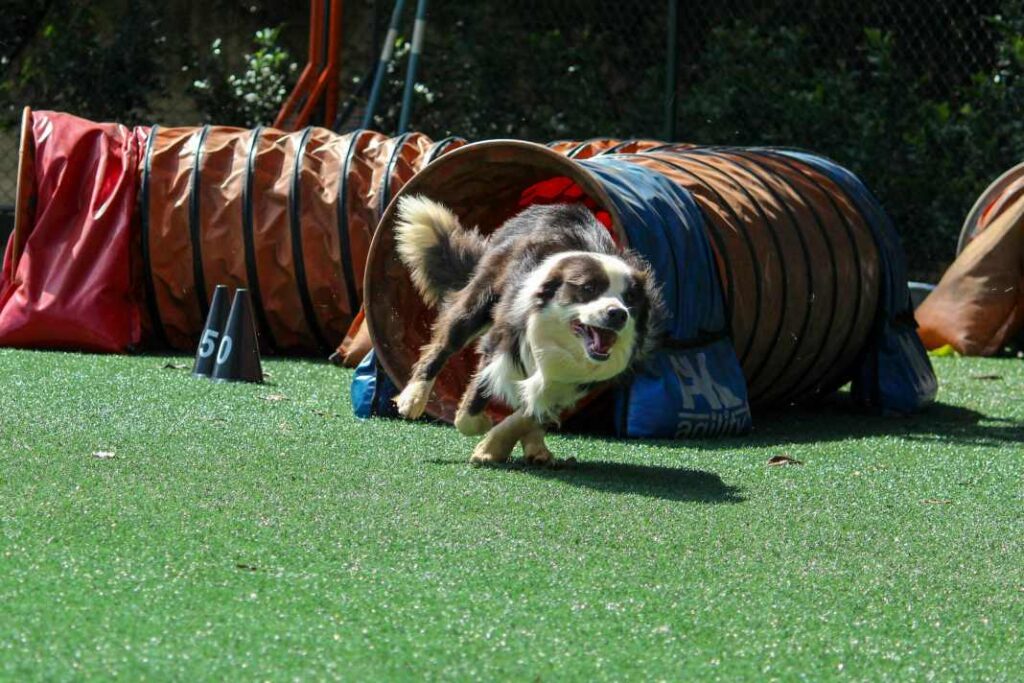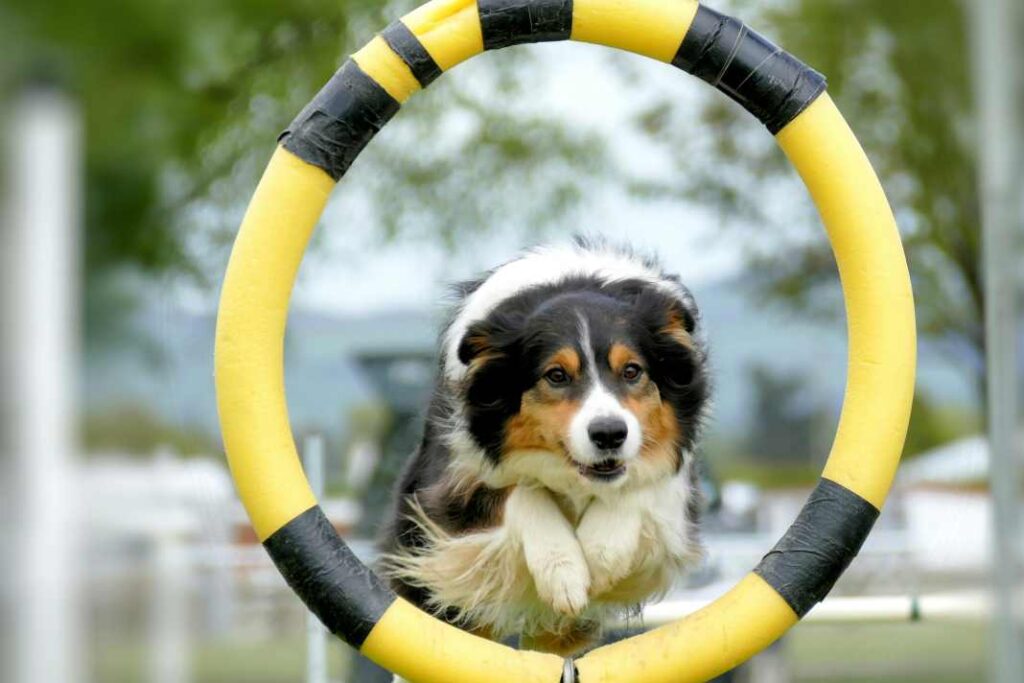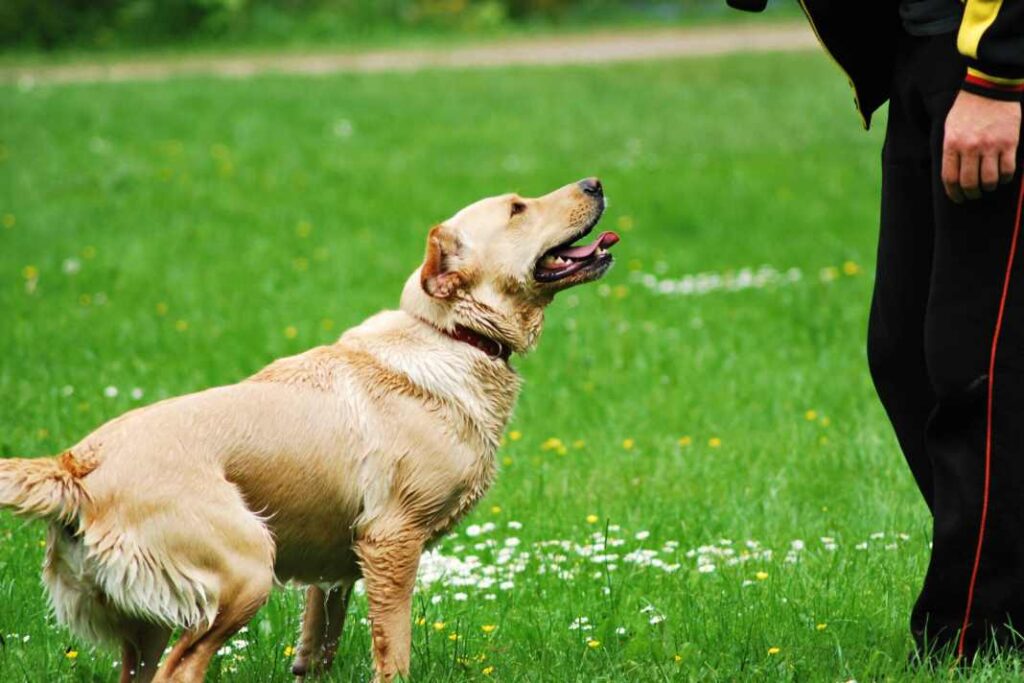Discover the numerous physical, mental, and social benefits of agility training for dogs, including improved muscle strength, flexibility, mental stimulation, and bonding with their owners, while also exploring new avenues of canine sports and recreation.
Click here for Expert Videos to Stop Dog Behavioral Problems!
Overview of The Benefits of Agility Training for Dogs
Agility training, initially established as a competitive sport in the 1970s, has evolved into a widely embraced pursuit among dog enthusiasts across the globe. Esteemed organizations such as the American Kennel Club (AKC) and the United States Dog Agility Association (USDAA) play pivotal roles in this evolution by hosting agility competitions that attract participants worldwide.
These events are not only a testament to the dogs’ remarkable speed, agility, and obedience but also spotlight the deep connection and seamless communication between dogs and their handlers.
This specialized form of training compels dogs to navigate through a meticulously designed course dotted with a variety of obstacles, including but not limited to tunnels, weave poles, and A-frames. The course’s primary aim is to challenge the dogs’ physical dexterity and mental acuity, compelling them to follow their handlers’ commands precisely and swiftly.
An exemplary illustration of agility training in action is the sight of a dog weaving through poles with grace and speed, demonstrating not only physical agility but also a profound understanding of the handler’s cues.
This synergy between dog and handler underscores the essence of agility training, highlighting its role in fostering an unparalleled bond and teamwork.
Key Benefits of Agility Training

Physical Health
Agility training is a fantastic way to improve your dog’s overall physical health. It enhances muscle strength, flexibility, and coordination, contributing to a well-rounded fitness routine for your furry friend.
Regular participation in agility training can also bolster joint health and reduce the risk of developing musculoskeletal issues, keeping your dog active and healthy.
Mental Stimulation
The intricate nature of agility courses demands significant mental effort from dogs, providing them with valuable cognitive challenges. Successfully navigating these courses boosts a dog’s confidence and self-esteem, as they learn to overcome obstacles and master new skills.
This aspect of agility training is particularly beneficial for keeping your dog’s mind sharp and engaged.
Bonding and Social Benefits
Engaging in agility training fosters a deep connection between dogs and their handlers. It cultivates trust and enhances communication, as both parties must work closely to successfully complete courses.
Additionally, agility training often leads to improved socialization skills for dogs, as they learn to behave more appropriately in various settings.
Getting Started with Agility Training
Assessing Your Dog’s Readiness
Before diving into agility training, it’s crucial to ensure your dog is physically and mentally prepared. A veterinary check-up can confirm your dog’s health status, preventing any potential complications. Consider your dog’s age, breed, and individual characteristics to tailor the training program effectively.
Assessing your dog’s motivation and eagerness to participate is also essential in determining their suitability for agility training.
Basic Equipment and Setup
Getting started with agility training doesn’t require expensive equipment. Household items such as hula hoops and cones can serve as preliminary training tools. Ensuring a safe and secure environment for your agility course is paramount, with adequate space for navigating obstacles.
It’s also important to adjust the equipment to match your dog’s size and physical capabilities.

Training Tips for Success
Achieving success in agility training with your dog requires a blend of consistency, patience, and understanding. It is essential to recognize that each dog is unique, learning at their own pace, which means adjustments in training expectations are often necessary.
For instance, while one dog may quickly master a sequence of obstacles, another may need extra time and encouragement to overcome a single jump. This variability underscores the importance of starting with foundational commands such as ‘sit’, ‘stay’, and ‘come’, before gradually introducing the dog to more complex agility maneuvers.
This step-by-step approach not only helps in building the dog’s confidence but also ensures that the learning process is enjoyable and stress-free for both the dog and the handler.
Success in dog agility training hinges on consistency, patience, understanding, and adjusting to individual pace.
Encountering behavioral challenges during agility training is not uncommon. Such issues, if not addressed, can hinder the progress of training and potentially lead to frustration for both parties. In such cases, seeking the expertise of a certified dog trainer can provide the necessary guidance to navigate these challenges effectively.
These professionals can offer tailored advice and training strategies that align with your dog’s individual needs and temperament. Moreover, integrating positive reinforcement techniques, like treats or verbal praise, when the dog successfully completes an obstacle or follows a command, can significantly enhance the training experience.
This not only strengthens the dog’s understanding of the desired behavior but also fosters a positive association with the training process, ultimately paving the way for a successful agility training journey.
Agility Training Exercises
Incorporating interval training into your dog’s regimen is a pivotal strategy for enhancing their performance on agility courses. This type of training alternates periods of high-intensity activity with periods of rest or lower intensity activity, effectively improving a dog’s speed, endurance, and adaptability to different agility challenges.
For example, a simple interval training session could involve having your dog sprint through a series of jumps or weave poles, followed by a period of walking or light jogging. This approach not only boosts their physical capacity but also keeps their training sessions engaging and dynamic, preventing boredom and maintaining their interest in agility activities.
Interval training enhances dog agility by boosting speed, endurance, and adaptability, keeping sessions dynamic.
Complementing agility-specific exercises with cross-training activities, such as swimming or hiking, is another effective way to build a well-rounded agility athlete. Swimming offers a low-impact alternative that strengthens muscles, improves stamina, and enhances a dog’s overall conditioning without putting undue stress on their joints.
Hiking, on the other hand, challenges a dog’s agility and decision-making skills as they navigate uneven terrain, obstacles, and varying inclines, closely mimicking the unpredictability of agility courses. Additionally, practicing agility exercises on different surfaces—such as grass, sand, or specialized mats—prepares dogs for the diverse conditions they will encounter in competitions.
This varied training environment not only enhances their physical capabilities but also improves their adaptability, making them more versatile and resilient competitors in agility trials.

Finding Resources and Support
In today’s digital age, the internet serves as an invaluable resource for dog owners interested in agility training. Websites and online platforms abound with instructional videos that demonstrate agility exercises, comprehensive training plans tailored to different levels of experience, and expert advice from seasoned trainers.
For beginners, starting with foundational courses such as the “Foundation for Agility” offered by OneMind Dogs can provide structured guidance and personal support from professional coaches, easing the initial learning curve.
This online presence not only simplifies the process of learning agility training but also allows for a flexible learning schedule that can fit into the busy lives of dog owners.
Online agility training resources offer videos, plans, and expert advice, enabling flexible, structured learning.
Beyond the digital realm, attending agility workshops or seminars significantly enriches the training experience. These events present an ideal setting for hands-on practice, under the direct supervision of experts.
They offer a platform for dog owners to ask questions, receive immediate feedback, and observe different training techniques in action. Moreover, such gatherings are excellent opportunities for networking with other agility enthusiasts, fostering a sense of community and shared learning.
Participating in local agility clubs or communities further supports the training journey by providing regular practice sessions, group learning experiences, and the chance to participate in friendly competitions.
Engaging with these communities not only enhances the training process but also strengthens the bond between dogs and their owners through shared activities and goals.
Conclusion: Benefits of Agility Training for Dogs
Agility training transcends the basic physical benefits to offer a comprehensive enhancement to a dog’s life, touching on aspects of mental stimulation, socialization, and the deepening of bonds between dogs and their owners.
Through navigating courses filled with jumps, tunnels, and weave poles, dogs not only improve their physical condition but also sharpen their minds by learning to follow complex commands and solve problems on the fly.
This combination of physical exertion and mental challenge ensures that dogs receive a well-rounded form of exercise that caters to their instinctual needs, such as the pursuit and navigation skills that would be used in a natural setting.
Agility training enhances a dog’s physical and mental health, fosters deep bonds, and nurtures a supportive community.
Moreover, the process of training and competing in agility fosters an unparalleled level of communication and understanding between a dog and its handler. Each successful run through an agility course is a testament to the trust and synergy developed through countless hours of practice and dedication.
For instance, a dog learning to navigate a tricky sequence of obstacles with precision on cue from its handler demonstrates not only obedience and agility but also a deep-seated trust and attentiveness to the handler’s commands. This enriches the relationship, making it stronger and more harmonious.
Furthermore, the agility community offers a supportive environment where both new and experienced participants can share tips, celebrate achievements, and enjoy the camaraderie that comes with a shared passion for improving the lives of their canine companions.

Mastering Reward-Based Training: Optimizing Treats and Praise for Dog Training

Reward-based dog training, through the strategic use of treats and praise, offers a humane and effective approach to teaching and reinforcing desired behaviors in dogs. This method not only enhances the learning experience but also strengthens the bond between dogs and their owners, making it a highly recommended strategy for dog training.
Learn how to effectively use treats and praise in reward-based training to encourage desired behaviors in dogs and build a strong bond between you and your furry friend.
Continue reading: Mastering Reward-Based Training
Mastering the Basics: A Guide to Basic Obedience Training for Dogs

Basic obedience training is the cornerstone of a happy, healthy relationship between you and your dog. It’s not just about teaching them commands; it’s about fostering communication, mutual respect, and understanding.
Continue reading: A Guide to Basic Obedience Training for Dogs



